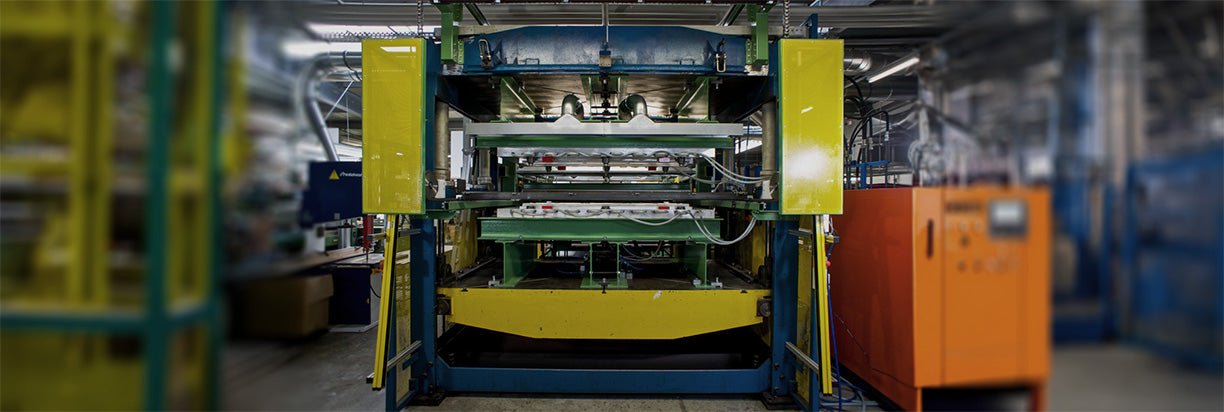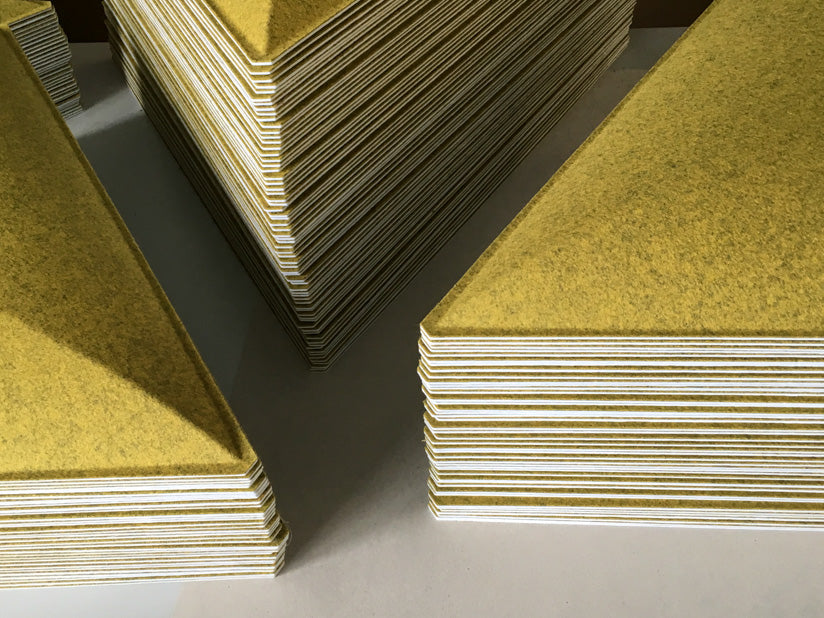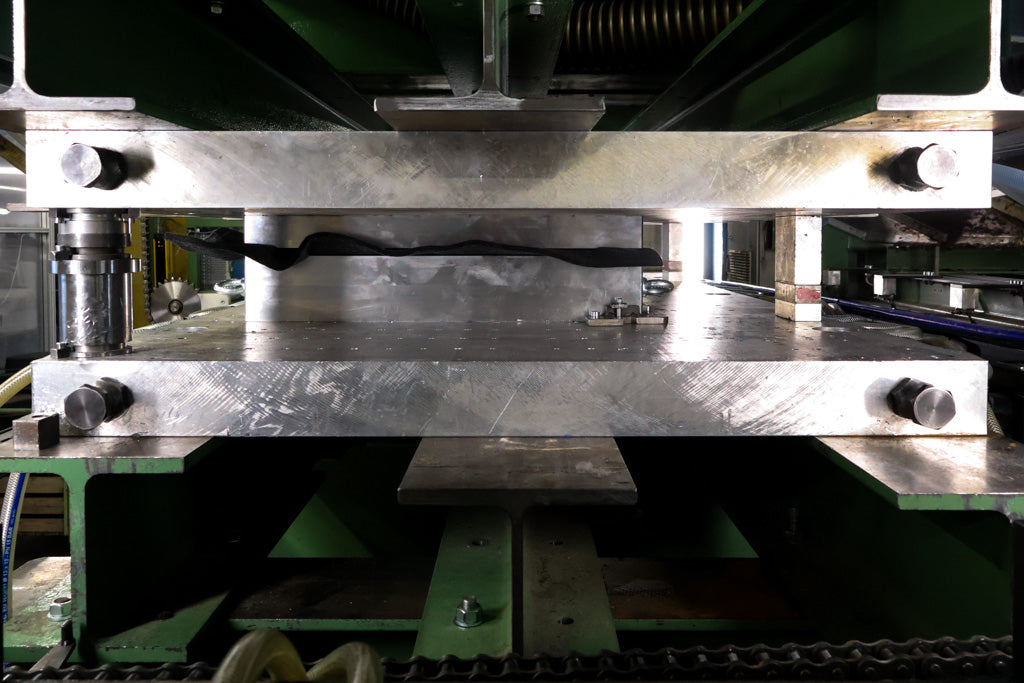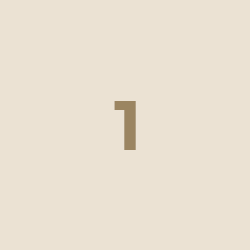Compression Molding
How Molded Nonwovens are Pressed Into Functional 3D Shapes Using Heat and Pressure
The Compression Molding Process for Nonwoven Materials
In the compression molding of nonwovens, the material is first heated in a contact heater to bring it into a malleable state. The nonwoven is then transferred to a special mold and compacted under pressure and cooling until it reaches the desired shape and strength. This process allows nonwovens to be molded into almost any shape without compromising their structural integrity. The result is customized products that are both functional and aesthetically pleasing.
Efficient Structure of the Formfleece Process
We produce a wide variety of cases and molded parts with several molding presses. Pressing systems with very large formats and a high pressing force mean that we are equipped to meet the high demands of our customers. We require individual tools for compression molding, but these can be manufactured cost-effectively compared to other production processes. By separating the heating and forming/cooling stations, we achieve short cycle times. In this respect, the cooperation between heating and press module enables us to optimize throughput times. This enables efficient series production for medium-sized batches.
Get to Know the Compression Molding Process in Our Video

Technical Details of Our Molded Fleece Processing
Machine Types for Pressing Fleece
Automated compression molding machines for fleece materials
Work Surface of the Machines
Up to 2000 x 1000 mm (several small formats)
Fleece Materials We Process
We mainly process fleece materials in the pressing process. There is a wide variety of materials available here: whether bio-based, degradable or recyclable - we will find the right solution for your project. The possibilities for individualization are almost endless thanks to the production of unique tools. With the help of an optimally positioned arsenal of special machines, we can also ideally implement further processing after pressing and deliver a finished product. More about fleece form shaped parts
Polyester Formfleece: A Recycled Mono-Material
Polyester fleece can also be of recycled origin and, as a mono-material, is very easy to recycle. It is ideal for the compression molding of 3D molded parts and is available in many colors and looks. More about polyester fleece
Natural Fiber Formfleece: Degradable Hemp Fleece
Natural fiber formfleece consists of European hemp and a degradable thermoplastic matrix fiber. This makes natural fiber nonwoven biodegradable and gives it a strong, natural appearance. More about natural fiber fleece
Upcycling Formfleece: Upcycling Old Clothes for 3D Molded Parts
Old clothes have hardly any use nowadays and end up in landfills and incinerators. We want to put them to better use and give them a new life as high-quality 3D molded parts. More about upcycling fleece
Fine Tuning for an Exact Fleece Shaped Part
Frequently Asked Questions About 3D Compression Molding
Molds
Tools are always milled from aluminum. For prototypes we mostly use wood or Ureol.
Quantities
The compression molding process is suitable for medium series. It usually makes sense from about 1,000 parts over its runtime.
Temperatures
Depending on the material, the temperature is approx. 130°-220°. This is also determined by the thickness, properties and desired properties of the final part.
Development time
Generally, it takes 4 to 6 weeks after the drawings are finalized to create a prototype. A series tool takes between 8-10 weeks, so that the first series production can usually start after 8 weeks.
Stability
Depending on how much the fleece is pressed, different strengths can be achieved. The material can be pressed very hard to cover certain functional areas of application or very soft to improve acoustic effectiveness.
Strenght
As the nonwoven material can have different thicknesses in its raw state, the thickness of the end products is also variable. We can press the fleece with millimeter precision.
Color combinations
It is possible to use different colors in one product and press them in one step.
Individual designs
The individual production of tools means that unique designs, the application of textures or similar techniques are also possible.
Material properties
Molded fleece is an excellent alternative to conventional materials such as plastic or wood. Nonwovens are characterized by their low weight, the UV resistance of their colors, their exceptional texture and feel and, last but not least, their sound-absorbing qualities.
Industries
Formfleece is suitable for applications in a wide range of industries. We manufacture it for the furniture industry, the automotive industry, the case industry and other technical industries.
Recycling
We primarily use recycled nonwovens or bio-based nonwovens and return this material to its raw state in a closed cycle after the product has completed its life cycle. This means that the raw material can be reused several times without any loss of quality and without harming the environment.










